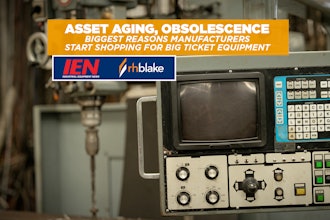Eventually, NASA wants to send humans to Mars. But before the space agency can send astronauts on the 140 million-mile trek to the red planet, they must conduct some serious testing.
This research includes ground-based missions called CHAPEA, or Crew Health and Performance Exploration Analog. These missions involve a four-person volunteer crew living full-time in a Mars simulation habitat called the Mars Dune Alpha for one year.
Most Read on IEN:
- 3 New Frontiers for Robotics and AI in 2024
- Subaru Idles Plants After Worker Crushed to Death
- John Deere's New Sprayer Looks Like a Military Vehicle
- Podcast: Army Scraps Billion-Dollar Program; United Grounds New Planes; Russian Component Conspiracy
NASA recently released the application for the 2025 mission, and the deadline to apply is April 2.
The 3D-printed habitat occupies 1,700 square feet at NASA’s Johnson Space Center in Houston. The habitat was made with ICON’s next-generation Vulcan construction system and features four private crew quarters, workstations, a medical station, lounge areas and galley and food growing stations.
During their yearlong stay, the crew will complete various tasks, including robotic operations, spacewalks, exercise, crop growth and habitat maintenance. However, the mission is supposed to simulate the hardships of being on Mars. Therefore, the crew will face multiple challenges, including equipment failures, communication delays, resource limitations and other environmental inconveniences.
The latest casting call serves as the second of three CHAPEA missions. The first crew checked into the Mars Dune Alpha last June and are scheduled to finish their mission this July. Last month, the team celebrated the 200-day mark. During their time in the simluation, the crew reported growing and harvesting crops, participating in “Marswalks” and taking part in biological and physical science investigations.
The application for the second mission is open to the public, but NASA isn’t going to take just anybody and plans to follow standard criteria for astronaut candidate applicants. In addition to requiring degrees and experience in STEM, the medical field or the military, NASA asks that applicants be U.S. citizens or permanent residents in the 30 to 55 age range, non-smokers and proficient in English. NASA added that compensation is available.






















